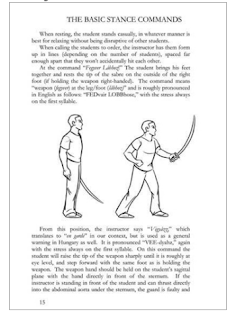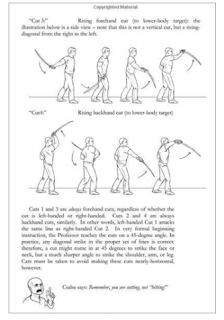In a previous post we had an opportunity to compare Russian blade testing methods from the time of Tsar Nicholas I (1827) with the modern ways of doing such tests. Now I would like to share the way that blades were tested in Britain in the 1830s.
Fig. 23
The description: „As so much is presumed to depend upon the goodness of a sword, every blade is submitted to a series of tests, much more violent than any service to which it is likely it can ever be really submitted. For instance. the point of a stout cavalry sabre, being placed against a pin in a board, containing six or eight spike nails, inserted at distances so as to form the segment of a circle, the blade is bent until it comes in contact with the spikes, when the flexure towards the middle amounts to six or seven inches from a line drawn from the point to the hilt. Fig. 23.
The point of the sabre is then placed upon a board, from which an upright piece rises, forming together a test-frame somewhat in the shape of an inverted F (thus JL): the hilt is then pressed down until the blade bend away from the upright piece about five inches, the amount of flexure being indicated by a projecting peg in the front of the frame. The sabre is likewise tested by striking it on both sides, as severely as possible, upon a stout table; and, afterwards, by smart strokes of both back and edge upon a block kept for the purpose. A sword that has sustained this fourfold ordeal will not be very likely to give way under any usage to which, as a hand weapon, it may be subjected.
The test to which the celebrated "Toledo blades" were submitted at the manufactory on the Tagus, when visited by Mr. Inglis, in 1830, is thus described: — "The flexibility and excellent temper of the blades is surprising: there are two trials which every blade must undergo before it be pronounced sound, — the trial of flexibility, and the trial of temper. In the former, it is thrust against a plate in the wall, and bent into an arc at least three parts of a circle: in the second, it is struck edgeways upon a leaden table, with the whole force which can be given by a powerful man holding it with both hands.” (Page 81) [1]
_____________________________
- John Holland: A Treatise on the Progressive Improvement and Present State of the Manufactures in Metal, Vol. 2 (1833) (online)
















